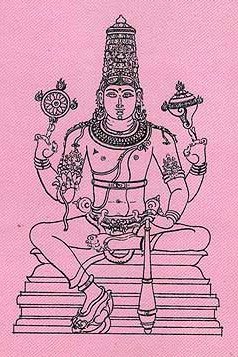Atmanubhava, Ātmānubhava: 6 definitions
Introduction:
Atmanubhava means something in Hinduism, Sanskrit, Marathi, Hindi. If you want to know the exact meaning, history, etymology or English translation of this term then check out the descriptions on this page. Add your comment or reference to a book if you want to contribute to this summary article.
Alternative spellings of this word include Atmanubhav.
In Hinduism
Pancaratra (worship of Nārāyaṇa)
Source: archive.org: Catalogue of Pancaratra Agama TextsĀtmānubhava (आत्मानुभव) refers to “self-realization”, as discussed in the nineteenth chapter of the Agastyasaṃhitā (agastya-suīkṣṇa-saṃvāda edition), an ancient Pāñcarātra Āgama text dealing with the worship of Rāma, Sītā, Lakṣmaṇa and Hanumān.—[Cf. the chapter yamādilakṣaṇa].—According to Agastya, self-realization [ātmānubhava] can be achieved either in this present life or in the released state. So long as one continues to identify with and to realize that he really is Rāma, whether involved in the things of this life or not, then the important thing of self-realization has been done. Further, since all things are Rāma, no matter what he who realizes this does, he cannot be far from mukti even while involved in bhukti. Being fully human does not in itself prevent one from the ultimate goal. So long as one practises meditation of the six-syllable mantra and so long as one also mentally focuses on his identity with Rāma, then there is nothing in this life either ordained for him to do or prohibited from his activities.

Pancaratra (पाञ्चरात्र, pāñcarātra) represents a tradition of Hinduism where Narayana is revered and worshipped. Closeley related to Vaishnavism, the Pancaratra literature includes various Agamas and tantras incorporating many Vaishnava philosophies.
Languages of India and abroad
Marathi-English dictionary
Source: DDSA: The Molesworth Marathi and English Dictionaryātmānubhava (आत्मानुभव).—m S Experience or knowledge of spirit or self; self-knowledge. Ex. tēthēṃ ā0 bōlijē kaisā kavaṇapari ||
Marathi is an Indo-European language having over 70 million native speakers people in (predominantly) Maharashtra India. Marathi, like many other Indo-Aryan languages, evolved from early forms of Prakrit, which itself is a subset of Sanskrit, one of the most ancient languages of the world.
Sanskrit dictionary
Source: Cologne Digital Sanskrit Dictionaries: Aufrecht Catalogus CatalogorumĀtmānubhāva (आत्मानुभाव) as mentioned in Aufrecht’s Catalogus Catalogorum:—vedānta. Oppert. Ii, 3105.
Sanskrit, also spelled संस्कृतम् (saṃskṛtam), is an ancient language of India commonly seen as the grandmother of the Indo-European language family (even English!). Closely allied with Prakrit and Pali, Sanskrit is more exhaustive in both grammar and terms and has the most extensive collection of literature in the world, greatly surpassing its sister-languages Greek and Latin.
Hindi dictionary
Source: DDSA: A practical Hindi-English dictionaryĀtmānubhava (आत्मानुभव) [Also spelled atmanubhav]:—(nm) self-experience.
...
Kannada-English dictionary
Source: Alar: Kannada-English corpusĀtmānubhava (ಆತ್ಮಾನುಭವ):—
1) [noun] one’s own experience.
2) [noun] (phil.) the bliss resultant of the realisation of self-knowledge.
Kannada is a Dravidian language (as opposed to the Indo-European language family) mainly spoken in the southwestern region of India.
See also (Relevant definitions)
Ends with: Svatmanubhava.
Full-text: Atmanubhav, Atmanubhuti, Atmanubhuta, Adhyatmashastra, Avadhutanubhuti, Ashtavakra Gita, Yamadilakshana.
Relevant text
Search found 4 books and stories containing Atmanubhava, Ātmānubhava, Ātmānubhāva; (plurals include: Atmanubhavas, Ātmānubhavas, Ātmānubhāvas). You can also click to the full overview containing English textual excerpts. Below are direct links for the most relevant articles:
Mahayana Buddhism and Early Advaita Vedanta (Study) (by Asokan N.)
Siddhanta Sangraha of Sri Sailacharya (by E. Sowmya Narayanan)
A History of Indian Philosophy Volume 4 (by Surendranath Dasgupta)
Part 5 - Concept of bhakti < [Chapter XXXI - The Philosophy of Vallabha]